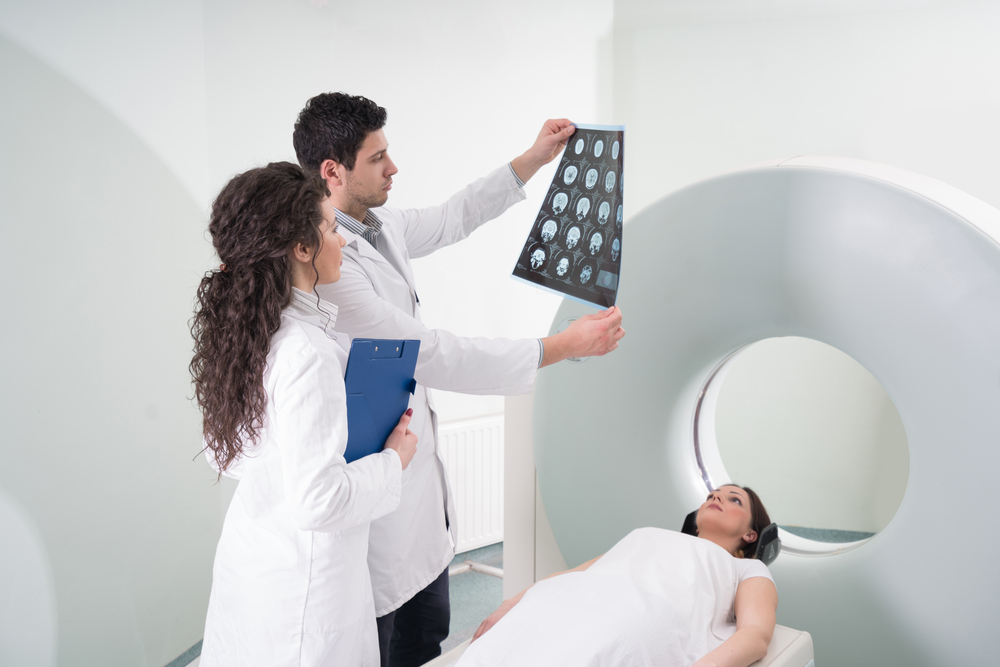Introduction
Have you ever wondered how doctors can see what’s happening inside your body without making a single incision? Diagnostic imaging tests have become a crucial part of routine healthcare, playing an important role in modern diagnosis and treatment. These tests help doctors detect and diagnose health conditions at an early stage, plan effective treatments, and monitor ongoing health issues without the need for any invasive procedure.
In this blog, we’ll explore how imaging technology can detect various health issues, the available types, and why it is crucial for early detection. This guide will help you understand how to choose the right imaging test, for instance, a CT scan or an MRI, which is better suited for diagnosing your specific health condition.
Understanding diagnostic imaging and how it detects health issues
Diagnostic imaging tests are medical technologies used to visualize the internal structures of a patient’s body to detect and monitor various health conditions. These tests create detailed images of the body’s anatomical structures, including muscles, organs, and tissues, helping doctors identify issues that may not be visible through physical exams alone.
Furthermore, imaging tests are non-invasive, painless procedures that play a crucial role in identifying injuries, diagnosing illnesses, and planning effective treatments. With the help of this modern technology, healthcare professionals can accurately detect abnormalities and assess health conditions before they become more severe.
How Diagnostic Imaging Identifies Health Concerns
Several health conditions may develop without noticeable symptoms at an early stage. Fortunately, imaging tests help medical professionals diagnose health issues before they become more complicated. These diagnostic tests play a vital role in healthcare by providing detailed visuals of the body’s internal structures.
With advancements in medical technology, the importance of imaging tests cannot be denied. But how do these imaging tests identify health issues? And what technologies do they use? Diagnostic imaging tests use advanced techniques such as CT scans, ultrasounds, MRIs, and X-rays. Moreover, some of these tests use radiation—either ionizing or non-ionizing—while others use sound waves and radio waves, making them suitable for diagnosing different conditions.
Diagnostic Imaging tests can detect a wide range of injuries, from head to toe. These tests provide comprehensive insights into the patient’s health, allowing for more accurate and reliable diagnosis, and ultimately leading to more effective treatment plans.
The spectrum of medical imaging that detects health concerns
Imaging tests help in diagnosing and monitoring health issues early, often even before symptoms appear. These tests are not only limited to detecting injuries but also play a pivotal role in diagnosing infections and other health conditions. The wide range of imaging tests includes X-rays, CT scans, MRIs, ultrasounds, and PET scans. These tests enable healthcare professionals to choose the appropriate procedure based on your specific health concerns.
Here are some common types of imaging tests and the specific areas they are best used for:
X-Rays:
X-rays are one of the most common diagnostic imaging techniques. They use ionizing radiation to produce clear images of the body’s internal structures, particularly joints and bones. X-rays are widely used to detect fractures, infections, and structural abnormalities.
Beyond these conditions, X-rays also help identify hidden issues such as osteoporosis, arthritis, and bone infections, making them ideal for early diagnosis and treatment planning.
CT (Computed Tomography) scans
CT scans use a series of X-ray images taken from multiple angles to produce detailed cross-sectional images of the body. They are ideal for examining internal organs, especially the brain, chest, abdomen, and pelvis. CT scans provide more detailed information than regular X-rays, making them highly valuable in emergencies.
MRI (Magnetic Resonance Imaging)
Magnetic Resonance Imaging (MRI) is a medical imaging technique that uses powerful magnetic fields and radio waves to create detailed images of the inside of the body. Unlike other diagnostic imaging, MRI does not rely on ionizing radiation, making it a safer option for patients. MRI is especially effective at imaging soft tissues and is often used to diagnose conditions related to the brain, spinal cord, muscles, and joints.
Ultrasound
Ultrasound is one of the safest and most painless imaging techniques available. It uses high-frequency sound waves to create real-time images of the internal structures of the body. Additionally, ultrasound is a non-invasive method that does not involve any kind of radiation, making it an ideal procedure for diagnosing a variety of conditions, especially during pregnancy. Moreover, it is also effective for assessing organs like the heart, liver, and kidneys, and can help healthcare professionals to detect complex conditions early.
Why is early detection crucial?
Diagnostic imaging isn’t just a procedure—it’s a frontline defender against complicated health concerns. It is an essential tool for detecting and diagnosing a wide range of medical conditions. Early detection plays a crucial role in timely intervention. Furthermore, it can significantly improve health outcomes, reduce the severity of illness, and prevent the condition from escalating into more severe stages.
You may also read: 6 Things You Need to Know Before Your Next Imaging Test
Conclusion
In summary, diagnostic imaging has revolutionized the healthcare industry by providing non-invasive and highly effective methods to detect a wide range of health conditions. Modern techniques such as CT scans, MRIs, ultrasounds, and X-rays enable doctors to identify serious health issues even before symptoms appear.
Furthermore, by utilizing radiation, sound waves, and radio waves, these imaging techniques offer precise and detailed views of the patient’s body. The accessibility of diagnostic radiology services has made it possible to detect a variety of health concerns with great precision. Whether it’s a potential injury or a severe condition, diagnostic imaging enables healthcare professionals to diagnose and monitor health issues early, leading to better patient outcomes.



